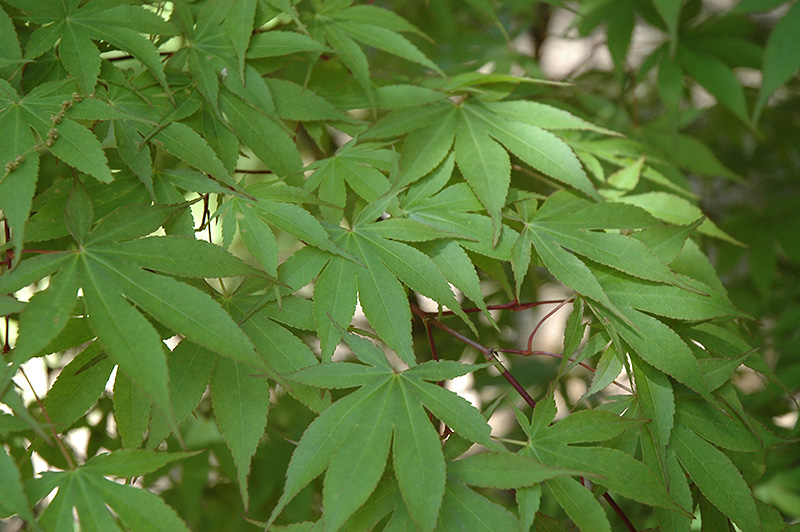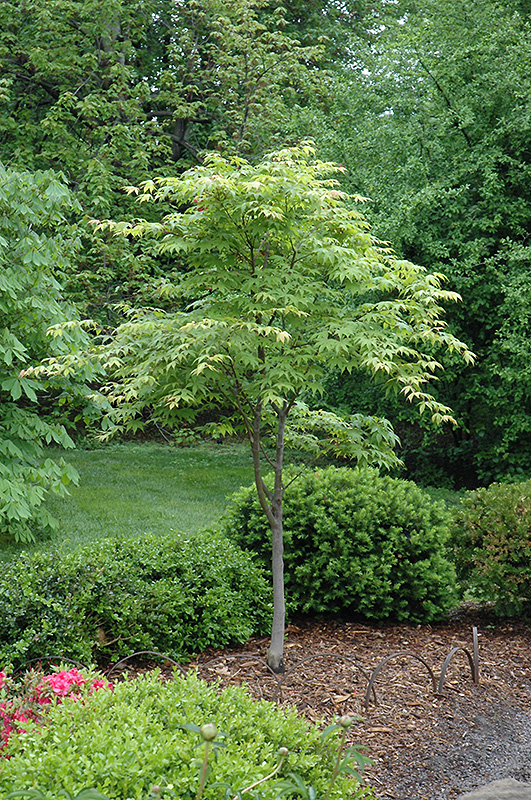>> Home
Osakazuki Japanese Maple
Acer palmatum 'Osakazuki'
Height: 20 feet
Spread: 25 feet
Sunlight:
![]()
Hardiness Zone: 5
Group/Class: Amoenum
Description:
An awesome small home landscape feature tree, this cultivar is valued for its stunning fall colors in hot shades of red and orange and its wonderfully shapely growth habit, fine winter texture; give it a prominent place in the front yard and room to grow
Ornamental Features
Osakazuki Japanese Maple is primarily valued in the landscape for its ornamental globe-shaped form. It features subtle corymbs of red flowers rising above the foliage in mid spring before the leaves. It has light green deciduous foliage. The lobed palmate leaves turn outstanding shades of yellow, orange and scarlet in the fall. The rough gray bark and red branches add an interesting dimension to the landscape.
Landscape Attributes
Osakazuki Japanese Maple is an open deciduous tree with a more or less rounded form. Its average texture blends into the landscape, but can be balanced by one or two finer or coarser trees or shrubs for an effective composition.
This is a relatively low maintenance tree, and should only be pruned in summer after the leaves have fully developed, as it may 'bleed' sap if pruned in late winter or early spring. It has no significant negative characteristics.
Osakazuki Japanese Maple is recommended for the following landscape applications;
- Accent
- Shade
- Mass Planting
Planting & Growing
Osakazuki Japanese Maple will grow to be about 20 feet tall at maturity, with a spread of 25 feet. It has a low canopy with a typical clearance of 4 feet from the ground, and is suitable for planting under power lines. It grows at a slow rate, and under ideal conditions can be expected to live for 80 years or more.
This tree does best in a location that gets morning sunlight but is shaded from the hot afternoon sun, although it will also grow in partial shade. Keep it away from hot, dry locations that receive direct afternoon sun or which get reflected sunlight, such as against the south side of a white wall. It prefers to grow in average to moist conditions, and shouldn't be allowed to dry out. It may require supplemental watering during periods of drought or extended heat. It is not particular as to soil pH, but grows best in rich soils. It is somewhat tolerant of urban pollution, and will benefit from being planted in a relatively sheltered location. Consider applying a thick mulch around the root zone in winter to protect it in exposed locations or colder microclimates. This is a selected variety of a species not originally from North America.


